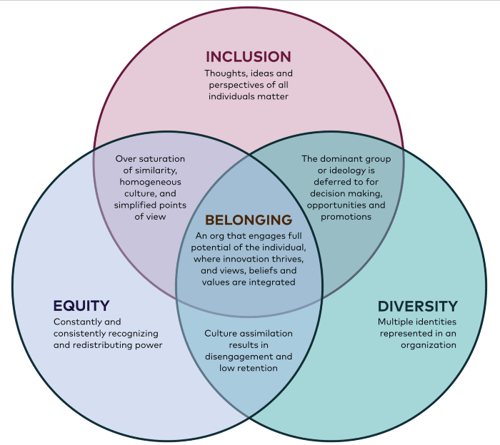
As companies continue to navigate remote working scenarios, one of their biggest challenges is maintaining employee engagement and well-being from a distance.
For some employees, this has been their first time working from home. Many still haven’t quite gotten the hang of it. They may feel isolated, disconnected, and overwhelmed by the competing priorities of work responsibilities and the demands of home life, especially if at-home schooling is thrown into the mix.
Many managers are equally adrift. Giving feedback over email or video can seem impersonal and create misunderstandings when information is lost in translation. Persistent issues are left unaddressed because it’s tough to hold an employee accountable when you can’t visualize their day-to-day work effort.
How can you help leadership develop remote team communication strategies that work for everyone?
In our webinar, “How to Create a Culture of Caring at Work,” workplace empathy expert Liesel Mertes addresses this very topic. She offers actionable skills you can use to create connections between management and employees during hard times.
There are already plenty of articles out there about what technology can make remote work easier, but that’s just the medium, not the message.
Having the right technology and tools in place is important, but what you’ll find in this blog are remote team communication suggestions that focus on those tricky-to-teach soft skills. In particular, we’ve found that demonstrating empathy and establishing a sense of belonging helps leaders build trust and create an environment for mutual accountability.
Let’s examine each of these in detail.
Develop a Culture of Empathy
For companies focused on their employees’ emotional wellness, creating a culture of empathy within teams is an excellent place to start.
Mental health associations like Good Therapy have countless published articles proving the benefits empathy can have on an organization—especially in difficult times. Empathy allows team members to understand the perspectives, intentions, and needs of others. This gives them access to better relationships and, ultimately, better overall emotional health. It’s also a pathway to better remote team communication.
When managers demonstrate empathy, team members feel heard and understood. They are more likely to share their struggles, which allows managers to help them resolve issues and address concerns. In an in-person working environment, this is important—in a remote working environment, it’s essential.
So, what does this look like in a remote team?
Empathy From Management
Managers can adopt a number of strategies to demonstrate empathy to their employees. Here are a few that we suggest:
1. Pay Attention
Non-verbal communication speaks volumes—even over a videoconference. While employees are talking, managers should be observing facial expressions and body language. What clues are employees giving you that they are overly stressed, distressed, confused, concerned, or just plain burned out?
Take the time to follow up on any observations. Simply acknowledging to an employee that you noticed their body language lets them know you care and that their workplace happiness and health is a priority for you as their manager.
2. Practice Humility
As you are following up with employees, remember there are many reasons for workplace stress—and how people react to it varies widely. Some of your employees will adapt as if nothing is happening and others will seem sensitive to nearly any hiccup in their day.
It’s important to not only be empathetic but also practice humility. You may not understand why your employee is distraught about a disagreement between team members. But those team members may be the only people your employee talks to regularly right now, and the employee is worried about losing their sole source of emotional support.
Avoid the trap of thinking that your way of handling a situation is the right way. Seek to understand the situation by asking questions and listening. Then encourage that same behavior within the team.
Related Content: Just because your employees are remote doesn’t mean every conversation has to be positive. Learn how to have the difficult conversations with employees in a remote environment.
Empathy Within Teams
Empathy isn’t just a manager’s responsibility. You also need to encourage empathy within the team to create effective remote team communication. Here are two ways to do just that:
1. Team Development
Consider dedicating at least one meeting per month to team development where employees build their empathy muscle. Participate in role-playing scenarios where one employee is talking and the rest of the team observes and shares what they see and sense based on body language, tone of voice, and facial expressions.
2. Shared Experiences
Another idea for teams is to create shared experiences like a workplace book club or movie club where employees discuss the characters, their emotions and how they can relate. Not only will this give teams the opportunity to practice empathy and humility, it may help them share more of their own feelings.
Related Content: A culture of empathy can pay off for your company. Learn about the ROI of empathy in our webinar.
Another soft skill that can help promote remote team communication is creating a sense of belonging.
Create a Sense of Belonging
If empathy has employees feel seen, heard, and understood, a sense of belonging makes them feel accepted and equally included.
“When employees are truly included, they perceive that the organization cares for them as individuals, their authentic selves,” says Gartner Managing Vice President Lauren Romansky in an article on building belonging in the workplace.
Belonging Benefits Your Team
Employees who feel like they belong are more engaged, more productive, and they experience more job satisfaction. A Gartner study showed that companies that create a culture of belonging experience:
- A 6.2% increase in on-the-job effort.
- A 5% increase in employees’ intent to stay with the organization.
- A nearly 3% increase in individual employee performance.
How to Curate a Sense of Team Belonging
When employees work remotely, they may lose some of the camaraderie and casual conversation that naturally creates rapport and a sense of belonging. Those interpersonal interactions are still necessary and have to be created in other ways. Here are three ways managers can intentionally foster a sense of belonging within teams:
1. Create a Shared Remote Wellness Challenge
Nothing brings people together like an annual wellness challenge, or what we refer to as an “anchor” challenge. Look for an activity that everyone in your company will enjoy, that involves sharing progress or experiences, and allows for encouragement.
Many companies use our wellness platform to log and track progress and cheer each other on remotely. Make sure to acknowledge employees’ achievements on team calls, emails, and in team chat platforms to encourage other team members to join in the chorus.
2. Get Social, Virtually
Virtual happy hours and activities like remote cooking classes and other trainings are great ways to bring your team together in a relaxed social setting. Granted, remote events can be more difficult to coordinate, but your employees will likely welcome the interaction and ability to connect with each other.
Employ icebreakers, games, and the sharing of fun stories during these social events to create rapport and make team members feel more comfortable with each other. These activities also contribute to empathy by giving team members a glimpse into their coworkers lives that they wouldn’t get if they were working in person.
3. Offer Mental Health Support
We know that employee mental health has become an unfortunate casualty during the pandemic. In fact, the U.S. Centers for Disease Control estimates that more than 40% of Americans now struggle with mental health issues as a result.
Provide employees with access to mental health help in a way that respects their privacy, their schedule, and their means. Consider implementing digital mental health solutions like the ones WellRight offers, where employees can interact with certified mental health counselors by text or take advantage of 24/7 online access to mental health resources.
Related Content: Take remote team communication a step further with our Remote Leadership Learning Lab.
By providing access to mental health care and creating an environment of empathy and belonging, managers can foster better and more open remote team communication.





